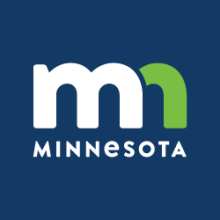
Fast, affordable Internet access for all.

The Office of Broadband Development (OBD) at the Minnesota Department of Employment and Economic Development (DEED) recently released a call for Border to Border Broadband grant applications. The deadline to submit your application is September 13, 2019.
This year, the State Legislature has appropriated $20 million in funding for projects located in unserved or underserved communities. As a reminder, Minnesota has established the thresholds as:
Unserved area: households or businesses lack access to wire-line broadband service at speeds of 25 Megabits per second (Mbps) download and 3 Mbps upload.
Underserved area: households or businesses do receive service at or above 25 Mbps / 3 Mbps, but lack access to wire-line broadband service at speeds of 100 Mbps download and 20 Mbps upload.
The OBD has posted a map of the state which allows users to to input addresses and quickly determine if their location qualifies for grant funding. Check it out here.
Who Can Apply?
As other states have shaped their broadband grant programs, they’ve looked to Minnesota for guidance. One of the shining characteristics of the Border to Border Broadband Broadband Development program has been the diverse field of eligible applicants. In some states, grants can only go to private sector companies, but Minnesota takes an “all hands on deck” approach. Eligible applicants include:
Eligible Program Costs and Matching Funds
Applicants can only receive grant funding if they provide matching funds, which can come from any public or private source. The project infrastructure must be able to support minimum symmetrical speeds of 100 Mbps.
Costs associated with a project that will be eligible for consideration include those associated with acquisition and installation of middle mile or last mile infrastructure. In addition to project planning, awardees may also apply for grant funding to pay for permits, construction, equipment, and installation or testing of broadband service. The maximum individual grant amount is $5 million.
Not Perfect
The program, which started in 2014, has awarded funds to local ISPs, cooperatives, tribal nations, large national companies, and even some local governments. Back when the program was just getting started, we spoke with Danna Mackenzie, the Executive Director of OBD, along with Matt Schmit, who was serving as a State Senator at the time and was instrumental in getting the program on the books. Listen to episode 119 of the Community Broadband Bits podcast to learn more about the vision for the program:
Since the program was implemented, a few unintended consequences have been identified, and the state has addressed one or two as the program it has evolved. The program will never realize its full potential, however, without more funding. Hear Christopher and Dan Dorman of the Greater Minnesota Partnership discuss some of the issues that Dorman's group and other rural advocacy groups identified along with the causes and potential solutions. He joined us for episode 190 of the podcast:
Ready to Apply, Minnesota?
If your Minnesota community is seeking funding for a broadband project, you can learn more about the application process, the program, and how applications are scored at the DEED website. They’ve put together a handy fact sheet [.pdf], which outlines the basics and if you know you’ll be applying, you can download the 2019 application here [.doc].
Deadline is September 13, 2019. Good luck, dontcha know!
In an announcement last week, Alexandria, Minnesota's (pop. 15,000) electric and water utility (ALP Utilities) announced it would be selling its business-facing fiber network to Arvig, a 40-percent employee-owned Internet Service Provider (ISP) that has 54,000 subscribers across urban and rural Minnesota.
In November, the Federal Communication Commission (FCC) unveiled its new Broadband Availability Map.
The U.S. Treasury Department announced another six states have been approved to receive nearly $1 billion in Capital Projects Funds from the American Rescue Plan to bring new broadband infrastructure to more than 180,000 homes and businesses.
